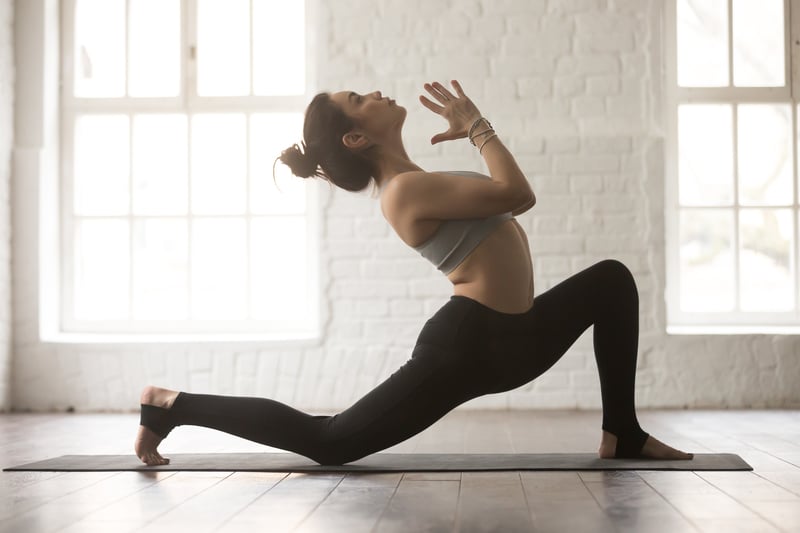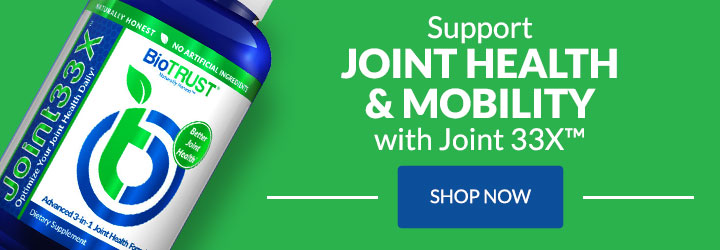Hip Flexor Exercises: 9 Ways to Strengthen & Stretch Your Hips

Ever gone to the gym for some quick hip flexor exercises? I didn’t think so. While you’ve probably heard of hip flexors, you may not know exactly where they are, what their function is, or how and why it’s important to not just keep them strong but flexible.
What are they? And how the heck are you supposed to work them? Read on to learn more about hip flexor exercises and stretches to build strength and flexibility and overcome weaknesses and prevent injury.
What are Hip Flexors?
You may not have brushed up on your Latin lately, but you still may recognize the word “flexion.” It means “to bend,” and when talking about limbs in the body, it refers to them bending or flexing at the location of the joint.
More specifically, flexion is talking about the act of decreasing the angle between two bones which are connected by a joint. For example, if you bring your hand toward your face, it will necessitate the bending of your arm at the elbow. Similarly, if you move your knee upward toward your stomach, you will be bending, or flexing, at the hip. This particular motion would engage what is known as the “hip flexor.”
In other words, this group of influential muscles help power just about every lower body movement we preform—from running to jumping to standing to bending at the waist.
Healthy hip flexors are important across the board as they make it less likely to have lower back pain, stability and balance improve, and you’ll have increased your lower body and trunk strength. And they are especially important for athletes and those who are more active as weak hip flexors can lead to pain and injury.
Hip flexor exercises can also improve performance. One study found that athletes who improved the strength of the hip flexors by 12.2% experienced a decreased time for shuttle runs by 9%.
What are the Hip Flexor Muscles
Like your shoulder region, the hips are made up of several muscles which, collectively, are known as the hip flexors. Located in your trunk and upper leg region—connecting your legs to your torso—these powerhouse muscles are often ignored. But it’s a big mistake to not do hip flexor exercises. Here’s why:
- The psoas major muscle attaches to your backbone and your leg. It’s the only muscle in the body that connects the two and actually weaves through your pelvic area to connect to the top of your thigh.
- The rectus femoris muscle is another hip flexor muscle which attaches your pelvis to your knee and makes it possible for you to do movements that have you bending at the knee like squats and lunges.
- Another muscle that helps you bend your knees and lift your legs is the Sartorius muscle. This lengthy slender muscle spans the length of your upper leg, running from your pelvis all the way down to your knee.
- If you need to rotate your leg, you’ll want to engage the illiacus muscle, a flat triangular muscle which, like its counterparts, originates in the pelvis and attaches to your thigh.
- Lastly, your groin muscle (top of your inner thigh) is called the pectineus muscle. This muscle performs a variety of functions including rotating your leg, bending at the hips, and moving your legs together (toward each other).
When Do You Use Your Hip Flexors?
You may be wondering which movements would cause you to engage your hip flexors. Well, you may be shocked by the fact that you use them for a multitude of normal daily activities, probably without even being aware of it. Any movement that causes you to lift one or both legs, as well as stances or movements you may use for stabilization, are going to require assistance of your hip flexors.
Some daily activities that use your hip flexors:
- Standing
- Walking
- Running
- Jumping
- Kicking
- Dancing
- Leg lifts (for example, when working your abdominal muscles)
- Squats
- Lunges
- Straightening your legs
- Rotating your legs inward
- Rotating your legs outward
How to Know if Your Hip Flexors Are Weak or Strained
Clearly, any weak muscle in the body is a problem, but having an injury or even a weakness to these stabilizer muscles can throw you completely off your game. Weak hip flexors can, of course, cause you pain, but they can also cause your body to compensate in other areas, eventually causing misalignment, which can lead to other injuries.
If you experience any of the following, you might have strained or injured your hip flexors:
- Pain
- Cramps
- Tightness
- Bruising
- Swelling
And, if you do find yourself with any of these symptoms, you may want to assess the extent of your injury before resuming normal daily activities. There are three grades of injury when it comes to your hip flexors:
- Mild: a small tear
- Moderate: a medium to large tear that makes it difficult to perform activities.
- Severe: a complete tear that normally requires surgery
Overuse injuries and pulled muscles are common with hip flexors. You’ll often hear of athletes with groin strains, for example. If you do get injured, God forbid, take care to stabilize the area, rest it as much as you can, use ice and compression and anti-inflammatories (including anti-inflammatory foods) to help you heal.
Weak hip flexors are an even more common problem, especially if you spend much of the day sitting in front of a computer. Sitting both shortens and tightens these muscles (and all the muscles in the front of the body). And if you then head to the gym to work your core muscles without performing hip flexor exercises, you can make them even shorter and tighter, which can lead to muscle imbalances, posture problems (often causing the hips to tilt and the belly to stick out), and set you up for injury.
9 Hip Flexor Exercises to Strengthen and Stretch
Remember, remaining seated for long periods of time, as many of us do, can cause hip flexors to tighten and remain tight over time—and many core exercises actually make the problem worse by making the muscles even tighter and weaker.
Pefroming these hip flexor exercises on a regular basis will do wonders for keeping your pelvis in line, alleviating back pain, preventing injury, helping you become more limber, and improving posture.
1. Standing Hip Flexor Stretch—begin standing up straight and step forward with your left foot into a lunge position, lowering your right knee toward the ground as you push your hips slightly forward. You’ll feel a stretch in the front of the right leg starting at the hip. Hold for 10 to 20 seconds before switching legs.
2. Kneeling Hip Flexor Stretch—standing with your legs together, step back with your left foot into a lunge position. This time, lower your left knee all the way down to the ground. (You may want to put extra padding under your knee.) Make sure your knee is stacked directly over your ankle on the front leg, and keep your torso strong and tall as you push your hips forward and stretch your right leg behind you. Hold for 10 to 20 seconds, release, and repeat on the opposite side.
3. Butterfly Stretch—sit on the floor with your feet together from the toes to heels and your knees out to the sides. (If you’d like, you can also give yourself a little foot massage.) Sitting up straight with your torso tall, pull your feet in as close to your body as you can, and push your knees toward the floor (as close to it as you can). Hold for 10 to 20 seconds and release. Repeat.
4. Standing Knee Raises—begin by standing with your arms by your sides with your feet hip-width apart. Lift your right leg and bend at the knee until your thigh is parallel to the floor, keeping the lifted foot flexed. Hold for a moment and repeat on the opposite side. Repeat 10 times for each leg.
5. Bridge Pose—begin by lying on your back with your feet hip-width apart and your knees bent. Keeping your shoulders firmly planted on the ground, lift from the hips until your torso and thighs form a diagonal line. Hold for a moment and return to start. Repeat 10 times. To make the exercise more difficult, you can place a block or medicine ball between your knees and use just enough pressure to keep it in place.
6. Lunges—begin in a standing position with your feet hip-width apart and your hands on your hips. Take a giant step forward with your right leg and bend at the knees until your legs form 90-degree angles. Push off with your left foot to return to the standing position and repeat on opposite side to complete one repetition. Repeat for 10 to 15 reps for each leg.
7. Clamshell Exercise—similar to the butterfly pose but done while lying on your side, begin by lying on your side with your knees on top of each other and your legs slightly bent. Rotate your top hip to lift your top leg until your knee is pointing toward the ceiling. Bring your leg back to starting position to complete one repetition. Do a set of 10 and then roll over to repeat on the opposite side.
8. Adduction/Abduction Machine—if you have access to a fitness facility, you can typically find this piece of equipment. Sit down on the machine with your legs bent and your knees placed against the pads. Move your legs outward toward your sides (abduction) and then also squeeze them inward toward the middle (adduction). Repeat for a set of 10 repetitions.
9. Foam Rolling—after you work out or after prolonged sitting, you can take some time with the foam roller a couple of times a week to provide relief. Place the foam roller on the floor and lie down so your hips are directly over it, balancing much of your weight on your hands, elbows, and toes. Lean toward the side you want to work and slowly and gently roll up and down over the front of your hips. Repeat on the other side.
If you sit a lot or if you are an athlete who has strained your hip flexors, it may take some time to stretch and strengthen these key muscles. But the rewards of hip flexor exercises are well worth it as you improve posture, relieve pain, and reduce the risk of injury.







